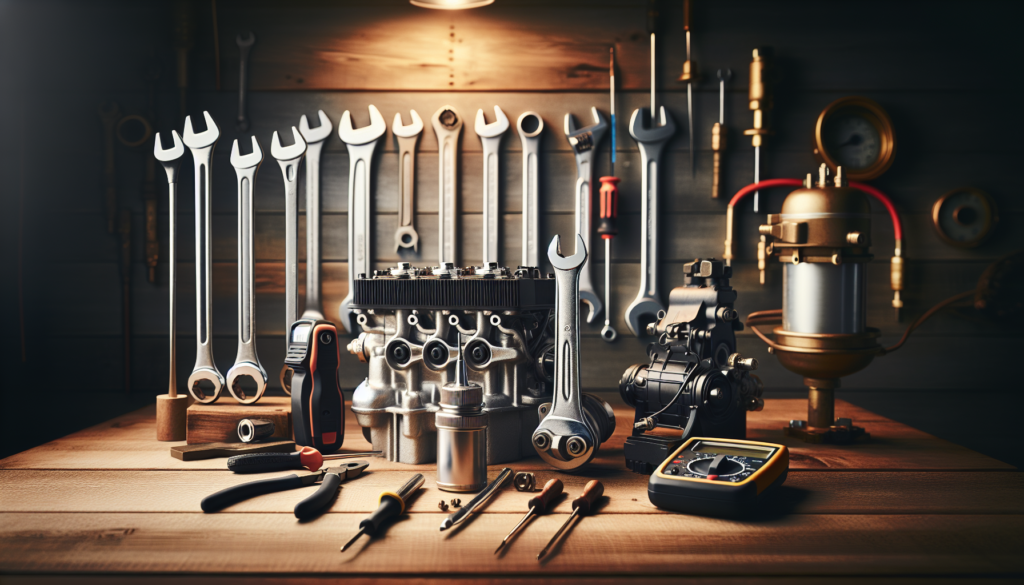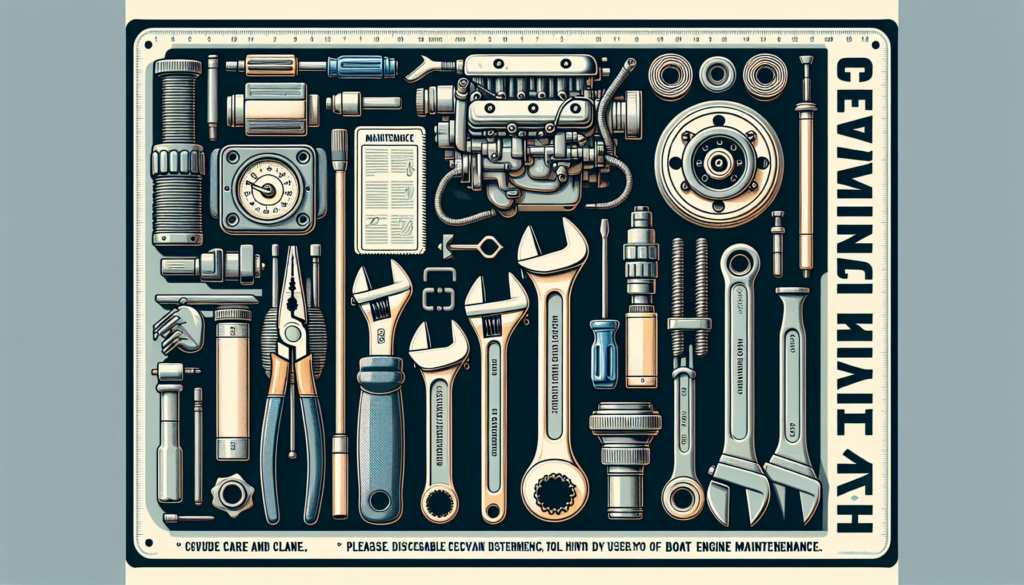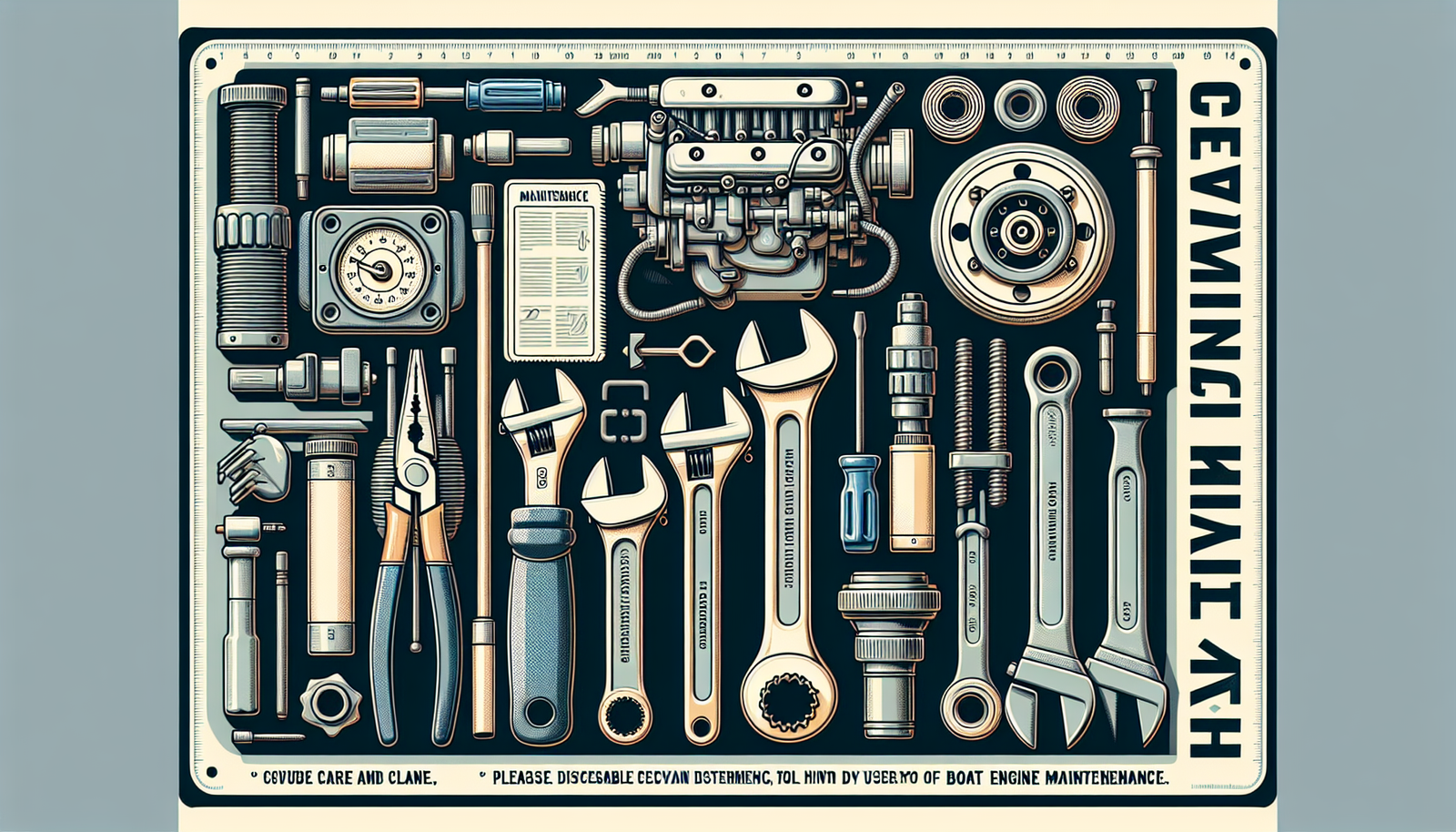Sailing smoothly through life on your boat a care in the world is a truly exhilarating experience. But, as a boat owner, being stranded in the middle of the water due to an engine malfunction could quickly spoil your idyllic marine adventure. Fortunately, with “Top 10 Boat Engine Maintenance Tools Every Owner Should Have,” you’ll be equipped to handle common engine issues before they turn into major problems. In this article, you’ll learn about must-have maintenance tools to keep your engine performing at its best, ensuring your sailing remains smooth, safe and uninterrupted.

Marine Grease Gun
Understanding the importance of a Marine Grease Gun
When it comes to taking care of your boat and particularly the engine, having a marine grease gun in your toolbox is invaluable. You see, boat engines are subject to constant friction, thanks to the incessant action of various parts and components. This can eventually lead to wear and tear, impacting longevity and performance of the engine. Therefore, ensuring regular and adequate lubrication helps reduce that friction, and consequently, the damage. That’s where the marine grease gun steps in. It is an essential tool that allows you to precisely deliver grease to those hard to reach components, heavily contributing to their proper functioning and longevity.
Choosing a quality Marine Grease Gun
Now, before you rush to grab any grease gun off the shelf, remember not all grease guns are created equal. Look out for one that is specifically designed for marine use. These are crafted from materials designed to resist rust and corrosion from the saltwater environment. Besides this, you should also check the pressure ratings and ensure it’s compatible with the grease cartridges used in marine applications. One more thing to keep in mind is the ease of operation; go for a gun that loads easily, dispenses grease smoothly and comes with a firm grip to prevent slippage.
Proper use of Marine Grease Gun for maintenance
Proper use of a marine grease gun is as important as having one. Always clean the nozzle before use to prevent any dust or debris from getting into your engine. Apply steady pressure when squeezing the trigger to allow for smooth, controlled grease discharge. After every use, clean your grease gun and store it in a cool, dry place to ensure it’s ready and effective for the next round of lubrication.
Boat Motor Flusher
Understanding the importance of a Boat Motor Flusher
Ever heard of a boat motor flusher? If not, it’s about time you did. Simply put, it’s a device that allows you to run water through your boat’s motor while it’s still on land. It is critical especially if you’ve been sailing in salt or polluted waters, as these can cause damage to the internal parts of the motor. A flusher helps you clean and flush out these harmful residues, keeping the motor in optimal condition.
Choosing the right Boat Motor Flusher
Choosing the right boat motor flusher largely depends on your boat motor type and size. Whether it’s an inboard or outboard engine, ensure the flusher is compatible. For best results, choose a dual feed motor flusher. It has two intakes for water, providing a more thorough cleaning on both sides of the motor.
How to use a Boat Motor Flusher effectively
Using a boat motor flusher isn’t rocket science. Simply attach it to your motor and a garden hose. Turn on the water and let the engine run at idle speed. This circulates clear and fresh water through the motor, flushing out any residues in the cooling system. Don’t forget to follow any specific instructions from your boat’s manufacturer.
Propeller Wrench
Understanding the importance of a Propeller Wrench
Meet your new best friend – the propeller wrench. Every boat owner knows how essential a propeller is for smooth and efficient navigation. But overtime, propellers can loosen and cause a lag in your ride. A propeller wrench is specially designed to check, tighten, or remove a boat propeller, making it an essential tool for boat maintenance.
Selecting a suitable Propeller Wrench
Finding the right propeller wrench is simple. Measure your propeller hub’s nut size and pick a wrench that matches it. Look for a durable wrench, preferably made of stainless steel or aluminum to resist corrosion. It’s an added bonus if it’s floatable, just in case it takes an unplanned swim!
Proper use of Propeller Wrench in maintenance
To use a propeller wrench, secure the blades and adjust the wrench to fit the propeller nut. Apply pressure in a clockwise direction to tighten and counterclockwise to loosen. When done, rinse it thoroughly and store it in a dry place.

Impeller Puller
The necessity of an Impeller Puller in boat maintenance
An impeller is the heart of your boat’s cooling system, circulating water throughout the engine. But, like every part, it’s subject to wear and tear and may need replacement. This is where an impeller puller proves invaluable, making the delicate extraction process easier and safer.
How to pick the right Impeller Puller
Choose an impeller puller designed for your specific impeller size. Go for one with strong, sturdy construction to handle the toughness of the job. A T-handle style is often recommended for greater leverage and grip.
Using an Impeller Puller for boat engine maintenance
To use an impeller puller, simply attach it to the impeller’s hub and tighten it until the impeller dislodges from the shaft. Be slow and steady to avoid any damage. Once done, be sure to clean the puller to prevent any future corrosion or rust.
Multimeter and Electrical Tools
The significance of Multimeter and Electrical Tools for boat engine
Boating is no fun when the electrical systems fail. The lights, the radio, the navigational instruments – they all depend on electricity. That’s where the multimeter steps in. This essential tool checks voltage, current, and resistance, helping diagnose and fix any electrical issues that might surface.
Choosing and purchasing the right Multimeter and Electrical Tools
Go for a multimeter that is dust and splash resistant. A multimeter with an auto-ranging feature will automatically select the appropriate measuring range for whatever you’re testing, which is quite handy. Don’t forget about other important electrical tools like wire strippers, crimpers, and cutters. Make sure they’re marine-graded and have insulated handles for safe working on electrical components.
Utilizing Multimeter and Electrical Tools effectively
When using a multimeter, always start by turning off your boat’s power system. Connect the multimeter to the system as per the user manual. Your red probe goes to the positive terminal and the black one to the negative terminal. You’re then good to test voltage, current, or resistance, depending on your need. When it comes to other tools like wire strippers or crimpers, ensure you follow safety procedures to avoid any electrical hazards.
Torque Wrench
Understanding the relevance of Torque Wrench
An often overlooked tool in boat maintenance is the torque wrench. Undeniably, this tool is critical for ensuring that bolts, nuts, and screws on your boat engine are tightened appropriately. Over-tightening or under-tightening them could spell disaster for your boat engine’s performance and lifespan.
Tips for buying an effective Torque Wrench
When shopping for a torque wrench, note the torque range. Make sure it matches with those recommended in your boat’s manual. A wrench with a built-in scale or digital interface for easy reading is ideal. Also look for one that is rust resistant and has a comfortable grip.
How to use Torque Wrench on boat engines
To use a torque wrench effectively, first, set the required torque value on the wrench. Then, place it on the nut or bolt you wish to tighten, applying pressure in a clockwise direction. Once the set torque is reached, the wrench will typically make a ‘click’ sound. This indicates that the desired tightness is achieved. Remember to always store it at its lowest setting to preserve its calibration.
Fuel Line Cleaners
Importance of Fuel Line Cleaners in boat engine maintenance
Fuel line cleaners are a must in any boat owner’s tool kit. Why so? Well, over time, fuel lines accumulate dirt and deposits interfering with the smooth flow of fuel to the engine. This not only hampers engine performance but could also lead to costly repairs. A fuel line cleaner eliminates these deposits ensuring your boat engine’s fuel efficiency and performance.
Selecting suitable Fuel Line Cleaners
It’s best to choose a fuel line cleaner that is compatible with your boat’s engine. Go for one with a universal fuel injector, and that is both alcohol and non-alcohol compatible. It should be able to efficient clean the entire fuel system including injectors, carburetors, intake valves, and combustion chambers.
Proper use of Fuel Line Cleaners to ensure optimal boat performance
Using a fuel line cleaner is straightforward. Pour it into the fuel tank before topping up with fuel. This ensures the cleaner thoroughly mixes with the fuel. As the engine runs, the cleaning solution travels through the fuel lines, removing any deposits. It’s best to follow the product’s instructions regarding quantity and frequency of use.
Corrosion Inhibitors
Role of Corrosion Inhibitors in extending the boat engine lifespan
Saltwater is harsh on boat engines. It can lead to corrosion, which if unchecked, shortens the lifespan of the engine. However, a regular application of corrosion inhibitors can protect your engine, significantly extending its lifespan. It forms a protective layer on surfaces and neutralizes corrosive elements, allowing your engine to run smoothly without the fear of corrosion.
Choosing the best Corrosion Inhibitors
Look for a corrosion inhibitor specifically designed for marine engines. It should be easy to apply, quick drying, and provide a long-lasting protective coat. Consider a non-solvent formula which is often less harsh on the environment.
Applying Corrosion Inhibitors
Corrosion inhibitors are generally sprayed onto the surface you desire to protect. Ensure the engine is cool before application. Spray a generous amount after each use, especially after contact with saltwater. Remember to respray it after engine service or when dissipation is apparent.
Spark Plug Tools
Why every boat owner needs Spark Plug Tools
A well-running engine heavily relies on the spark plug. It ignites the fuel-air mixture in the engine, powering your journey. Hence, ensuring spark plugs are in good condition is critical. And for that, you need spark plug tools, like a socket and gap gauge, to remove, check, and adjust your spark plugs.
Selecting effective Spark Plug Tools
Always choose a spark plug tool that matches the size of the spark plugs in your engine. Tools made from rust-resistant materials are preferred to ensure they last long. For sockets, opt for one with a rubber insert to protect the spark plug ceramic body from damage.
The correct use of Spark Plug Tools for boat engine maintenance
To remove a spark plug, fit the spark plug socket onto your wrench and turn it counterclockwise. To check the spark plug gap, use a gap gauge. If any adjustment is needed, carefully bend the ground electrode until it’s set to the manufacturer’s recommended gap. Remember to always replace spark plugs at regular intervals to guarantee your engine’s performance.
Fogging Oil
The significance of Fogging Oil in boat engine maintenance
Fogging oil plays a pivotal role in maintaining your boat engine, particularly during storage times. It aids in preventing corrosion in the internal parts of the engine that can come into contact with air. It leaves a protective coating on these parts, thereby enhancing their longevity.
Choosing the right Fogging Oil for your boat
The right fogging oil is one that is easy to apply and provides excellent long-term corrosion protection. It should also be compatible with both two-stroke and four-stroke engines. Look for one that doesn’t affect the subsequent use of the engine after storage.
How to adequately use Fogging Oil
Using fogging oil involves spraying it into the engine’s air intake or spark plug holes while the engine is running. This protects the cylinder walls, piston rings, and other interior components. After application, turn off the engine and store as recommended by your boat manufacturer.

